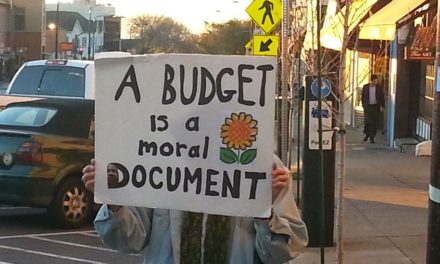From Chalkbeat Tennessee:
The Shelby County school district is planning to close as many as 13 schools in Memphis next year. The district is holding hearings at each of the affected schools over the next few weeks.
After a public hearing at Alcy Elementary School, Reginald Porter, Jr., the district’s chief of staff and a former school board member, talked about what’s coming up next for school closings, about how the district’s responding to a growing charter sector, and about how the district is trying to incorporate community feedback in its plans.
1. These closings are different than the last round:
The closures five years back were strictly schools that were grossly underutilized. The ones over the last 2-3 years are the ones that were recommended by the transition planning commission (which made plans for the merging of the Shelby County district and the Memphis City district). We looked at a list of schools to determine which are underperforming and underutilized – operating at 65% of capacity or below – and determined that for some, with a shrinking economy and shrinking budget, closing or merging would give them a better shot.
According to a district spokeswoman, legacy Memphis City Schools had closed 13 schools since 2009.
2. The district has learned from previous rounds of closings, but is still figuring out some components:
One thing we’ve learned is, financial savings is not the the reason to close schools. We look at underutilization and actual academic process of students – those are the first two things.
One of the things we’re still learning, how do you staff the now-merged school? Do you take all high-performers (high-performing teachers) and move low-performers out? Or do you try to keep more teachers who were in the school for stability? We’re still trying to figure that out. We want to make sure kids are taken care of. I don’t think there’s a magic bullet or magic formula.
All the schools are different, each have unique issues. We went to close some schools last years, where, if we merged those, there would’ve been gang problems. So when they merged Hamilton and Southside, for instance, one of the things they had to do was put in a bunch of security. Every school is different.
To read more, click here.




Select Comments from Reginald Porter, Jr. Chief of Staff, SCS
“We can’t negotiate any plans for a building until it’s officially planned to be closed. We know we have charters and the ASD, we’re maybe interested in that. We have to work with the city and the county to use these buildings effectively.”
“It’s actually up to the board. But if some of the communities have viable plans, our recommendation might be not to close. But we need to have that confirmed community support and ideas that make the community a viable place. We have to make sure kids are taken care of.”
“….. if we did a better job of educating our kids, the schools would fill up, kids would come back to the neighborhood.”
Where is neighborhood planning in the school closings process? Planning by local government and SCS in partnership with the neighborhood and other stakeholders doesn’t seem to exist based on news accounts like this blog and other media outlets.
Many officials, including Porter, say each school is different. Yes, and each neighborhood is different calling for different strategies for a long term vision that includes both the school AND the neighborhood.
FH,
I think neighborhood planning of the scale and nature you are referencing either does not exist, at least in the form of an education centric perspective. Historically if and where it has occurred, it has been the forte of the school itself, the school district or PTA. In the more broad and traditional planning context- as has been stated countless times on this site by almost everyone it seems- the local planning body (OPD) is almost entirely reactive in its nature, structure and practice. To be proactive, OPD would require a directive from the city council (or perhaps the county commission) with defined goals and outcomes of such a study already established.
Urbanut:
I agree but OPD of late has not even been reactive.
I was thinking of a “building centric” perspective with neighborhood needs planned for school building (including education for both children and adults, community center, day care, library with computers and high speed internet, social services, community policing, code enforcement, etc). This building centric approach would respond to neighborhood priorities for housing, retail and other work places, parks, transportation, and other land uses to sustain a population to be served by the school building.
SCS is currently in an isolated mode with no thought being given to the future of the neighborhood. Very narrow minded but true to its mandate. I hope SCS would welcome some leadership from City of Memphis.
Yes, the City Council AND Mayor would have to create a work program and SCS would have to step up and partner with OPD.
FH-
I hope you read this: I sincerely think that is a great idea! We already know that there is a correlation between those neighborhoods with underutilized school buildings and those areas where concentrated social support and intervention is most desperately needed. It would repurpose these buildings from being merely education facilities to more diversified “neighborhood health & wellness” hubs. In addition to your well thought out list of activities, I could even imagine the empty rooms and spaces becoming very affordable (free?) spaces for small businesses in support of the push for local startups. Many of those concerned about the closing of these facilities do so because they represent the heart and identity of the surrounding neighborhood. Utilizing these buildings in such a diverse way would make them more integral to the daily lives of the surrounding residents than these spaces ever were as mere classrooms. It may go nowhere but I think a letter or two to certain government officials would in no way hurt. Maybe SCM has ideas on how best to at least make this suggestion and the individual(s) that would be most receptive to the idea.
I agree with you and hope SCM will do a blog on this and point out who should come together and then invite them to a meeting.
Just to be clear on my thoughts, I feel that Pre-K thru 12 can still happen in these buildings with the added activities as we suggest. One problem is that school officials have a fear of mixing school classes with neighborhood oriented activities. They are afraid of adults being on the same campus with children, but I think this a foolish notion that can be handled with sound planning and security (architectural and human). Why is society so afraid of itself?